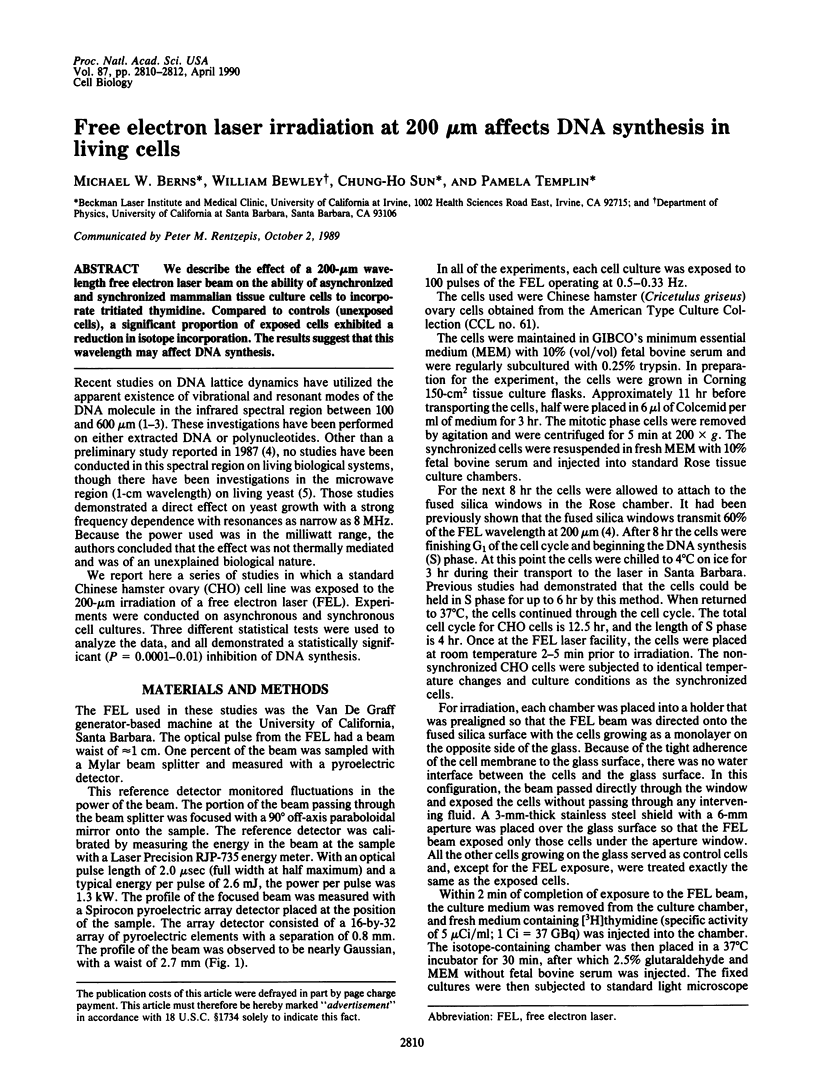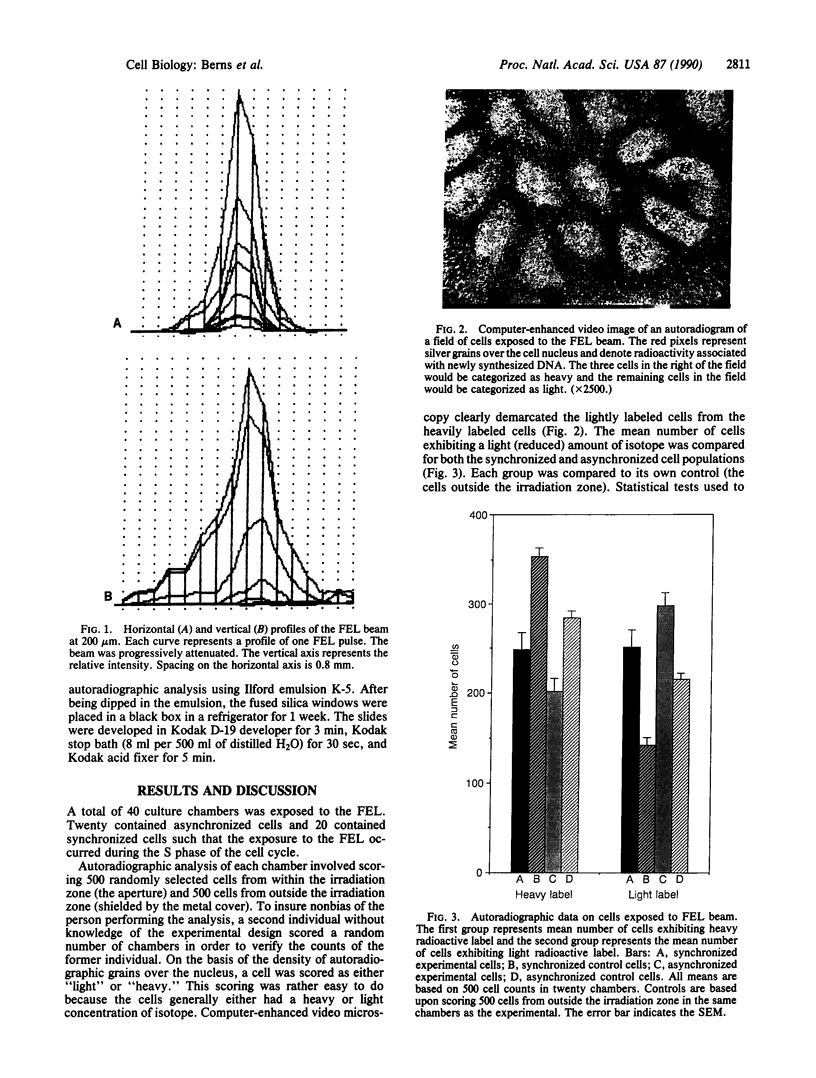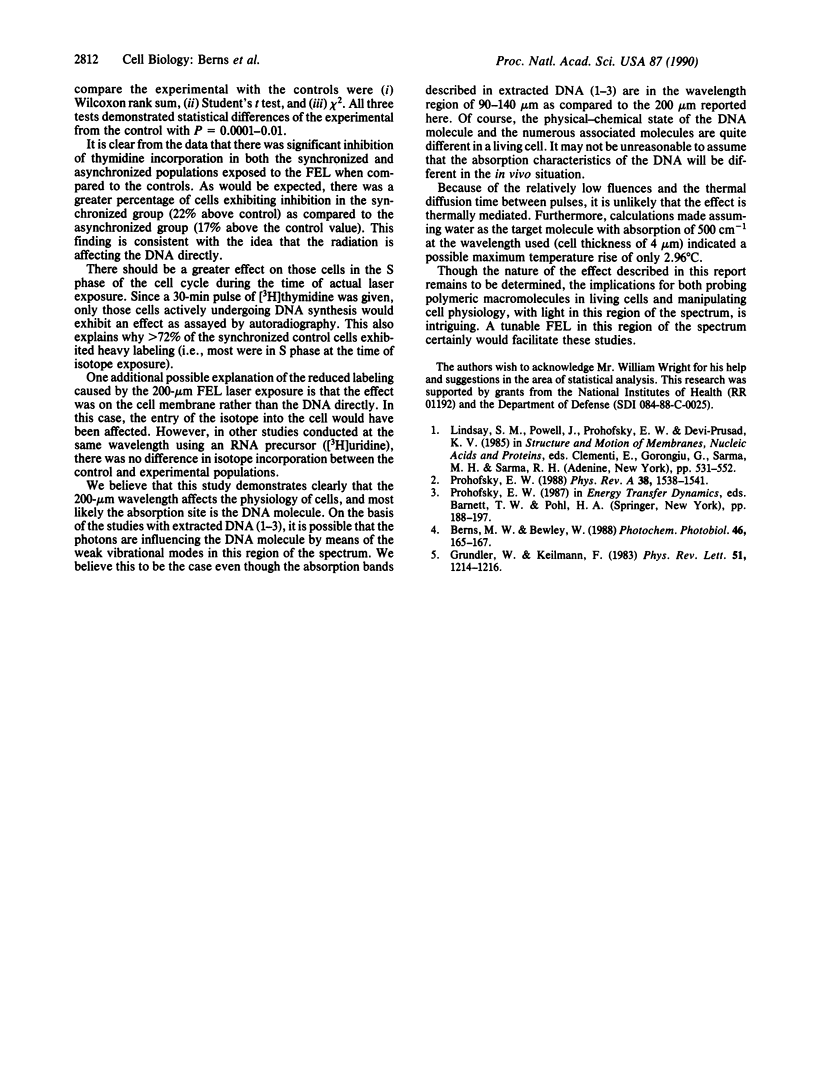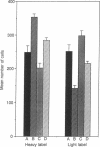Abstract
We describe the effect of a 200-microns wavelength free electron laser beam on the ability of asynchronized and synchronized mammalian tissue culture cells to incorporate tritiated thymidine. Compared to controls (unexposed cells), a significant proportion of exposed cells exhibited a reduction in isotope incorporation. The results suggest that this wavelength may affect DNA synthesis.
Full text
PDF


Images in this article
Selected References
These references are in PubMed. This may not be the complete list of references from this article.
- Berns M. W., Bewley W. Inhibition of nucleic acid synthesis in cells exposed to 200 micrometers radiation from the free electron laser. Photochem Photobiol. 1987 Aug;46(2):165–167. doi: 10.1111/j.1751-1097.1987.tb04752.x. [DOI] [PubMed] [Google Scholar]
- Prohofsky EW. Solitons hiding in DNA and their possible significance in RNA transcription. Phys Rev A Gen Phys. 1988 Aug 1;38(3):1538–1541. doi: 10.1103/physreva.38.1538. [DOI] [PubMed] [Google Scholar]




